Table of contents of the article
ToggleThe olive fruit fly is considered one of the most dangerous pests that affect the quality of the crop, as it causes damage to the fruits and loss of their economic value. This article from the “WORLD OF PLANTS” website discusses prevention and control strategies.
Symptoms of olive fruit fly
- Scientific name : Dacus oleae
- the family : Ddiptera
The fruit tissue rots and turns soft brown, and the infection causes the fruits to fall before they ripen.
. 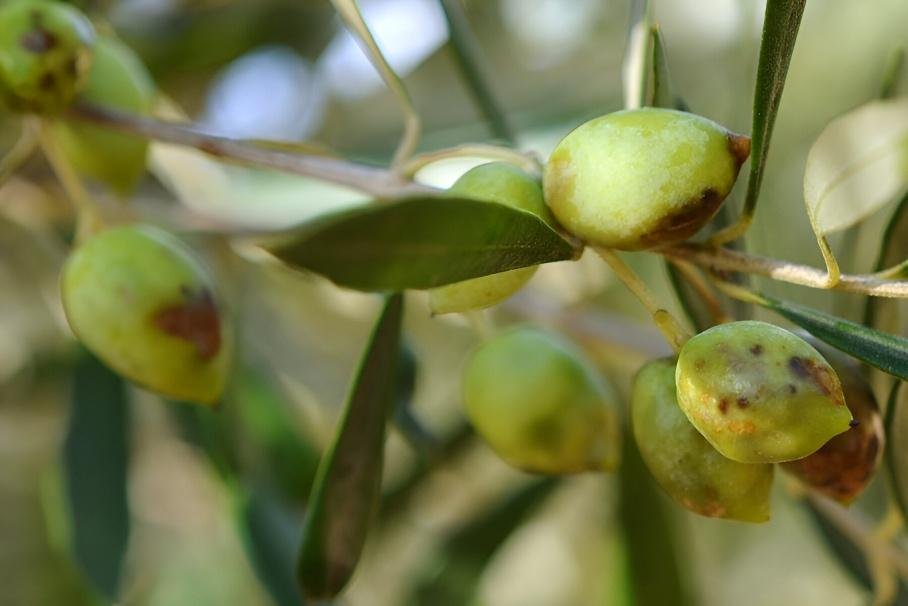
Description of the olive fruit fly disease
- Its length is (5 mm). The head is wider than the chest and its color is yellowish brown. The chest is more colorful, tending to black with a purple tint. The chest is covered with white pubes, and a white longitudinal line extends on its sides. The abdomen is longitudinally striped with dark brown... The larva is 7 mm long, legless. Conical in shape and white in color. The pupa is 5 mm long and has a brown barrel.
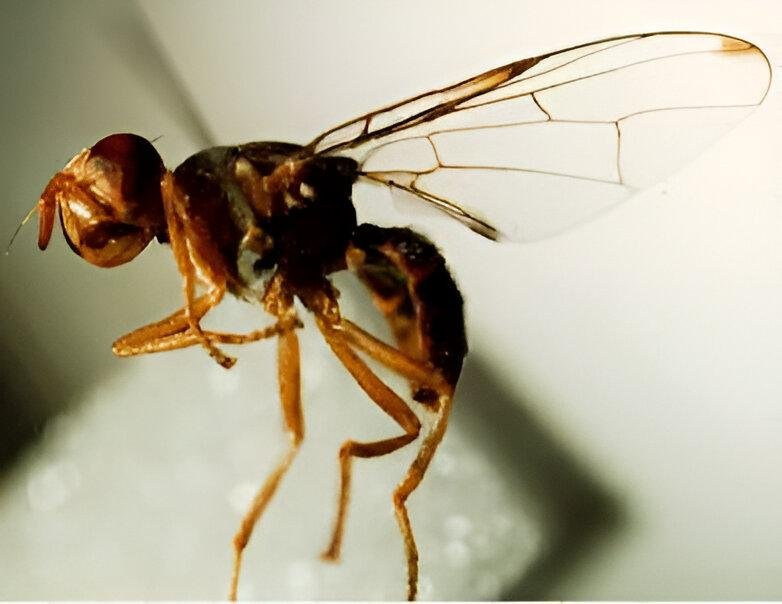
Causes of olive fruit fly
- It is suggested that it is the interaction between temperature, humidity and access to fruit that determines when ovary maturation ceases.
- Experiments conducted in constant temperature tanks indicated that high temperatures (i.e. 26–29°C) in conjunction with low humidity (45±5°C) inhibit ovary maturation.
Suitable conditions for the spread of the olive fruit fly
- The sensitivity of olives to olive fly attack increases with the size of the fruit, up to a limit of 3.5 grams.
- High humidity and cold.
Olive fruit fly development cycle
Eggs are laid by making a hole using an ovipositing device in the olive peel, leaving only one egg in the cavity below. The sting has a distinctive triangular shape due to the visual effect. The puncture has a dark green color, while old bites have a yellowish-brown color as a result of healing wounds.
Hatching occurs over a different period of time depending on weather conditions: from 2-3 days in summer, to about 10 days in autumn. The newly hatched larva initially tunnels on the surface, but later moves deeper into the flesh to the pulp, which is not affected in any way. During larval development, two changes occur, which in turn cause the larvae to increase in size
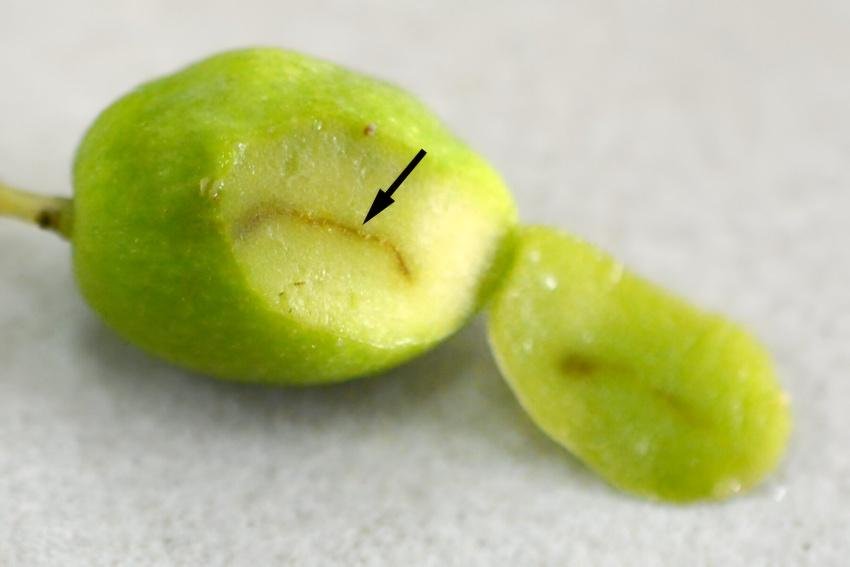
Around the third change, third-instar larvae move toward the surface and prepare the exit hole for the adults, gnawing off the flesh to leave a thin surface layer. During this stage, Al-Zaytouna clearly shows signs of attack because it appears darker in conjunction with the digging of tunnels. A circular hole appears on the surface due to skin residue.
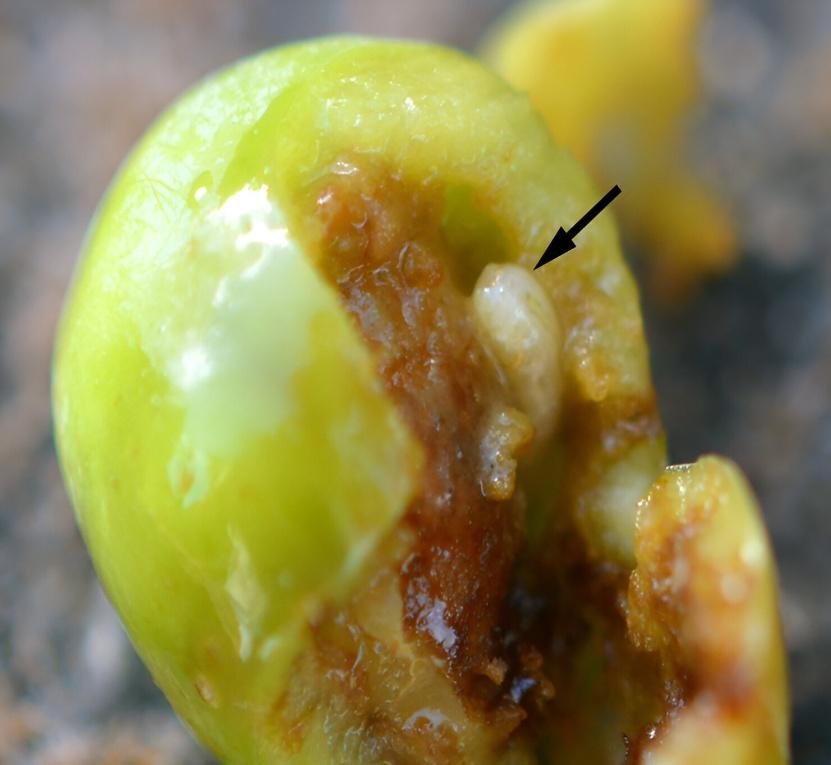
Upon maturity, the adult breaks and emerges from the cocoon. The surface of the skin left by the larva forcibly breaks off and leaves an exit hole.
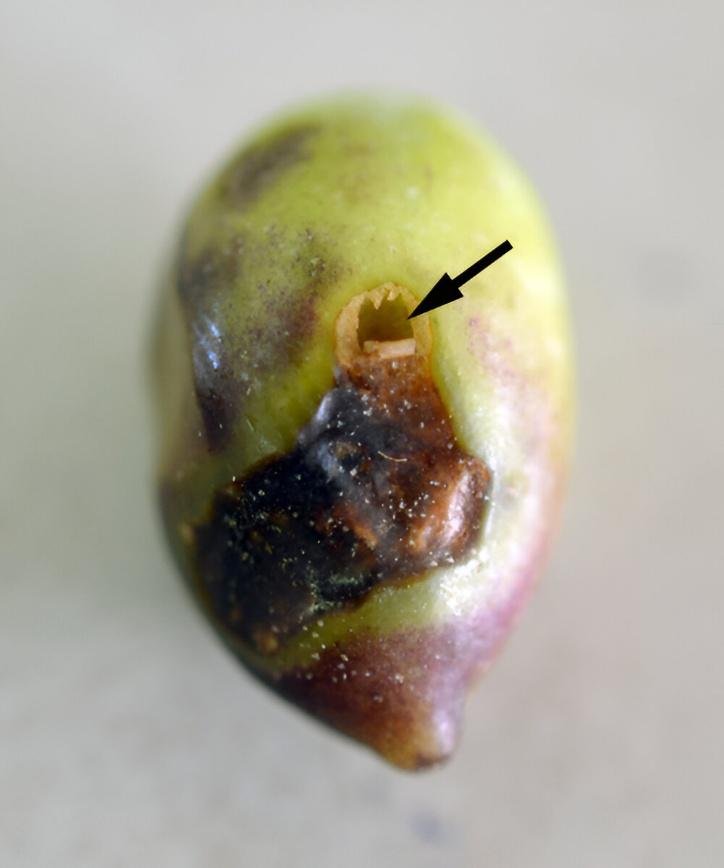
Losses from the spread of the olive fruit fly
- It causes premature fruit drop and “sting” damage to table olives and a significant reduction in the quantity and quality of the oil.
Strategy for combating the olive fruit fly
Preventive measures to prevent the occurrence of the disease
- Once the fruits mature, they become attractive to females that lay eggs, so all fruits must be picked from the trees.
- Getting rid of weeds, plant dirt, damaged parts, and plants whose growth is not evident.
- Male destruction technique
- Destruction of infected fruit
- Soil treatment
Chemical and organic control recommendations
- An effective method for combating the olive fruit fly: This method combines a food attractant, a stimulant, a male sex pheromone, a female aggregation pheromone with additional repellent and aphrodisiac properties, and a polarizing substance on a wooden board treated with insecticides.
- The organophosphate insecticide dimethoate can be used
In conclusion, we would like to note that we, at the world of plants website, offer you all the necessary services in the world of plants, we provide all farmers and those interested in plants with three main services::-
- Artificial intelligence consulting service to help you identify diseases that affect plants and how to deal with them.
- Blog about plants, plant diseases and care of various crops ... You are currently browsing one of her articles right now.
- An application that provides agricultural consultations to clients, as well as a service for imaging diseases and knowing their treatment for free – Click to download the Android version from Google Play Store، Click to download the IOS version from the Apple App Store.
References:
- Manousis, T., and N. F. Moore. “Control of Dacus oleae, a major pest of olives.” International Journal of Tropical Insect Science 8.1 (1987): 1-9
- HANIOTAKIS, G., et al. An effective mass trapping method for the control of Dacus oleae (Diptera: Tephritidae). Journal of Economic Entomology, 1991, 84.2: 564-569.
- Neuenschwander, P., Michelakis, S., Holloway, P., & Berchtol, W. (1985). Factors affecting the susceptibility of fruits of different olive varieties to attack by Dacus oleae (Gmel.)(Dipt., Tephritidae). Zeitschrift für angewandte Entomologie, 100(1‐5), 174-188.
- Fletcher, B.S., S. Pappas, and E. Kapatos. “Changes in the ovaries of olive flies (Dacus oleae (Gmelin)) during the summer, and their relationship to temperature, humidity and fruit availability.” Ecological Entomology 3.2 (1978): 99-107
- Control of Dacus oleae, a major pest of olives – cambridge
- An Effective Mass Trapping Method for the Control of Dacus oleae – Oxford University Press
- Factors affecting the susceptibility of fruits of different olive varieties to attack by Dacus oleae – WILEY ONLINE LIBRARY
- Changes in the ovaries of olive flies (Dacus oleae (Gmelin)) during the summer, and their relationship to temperature, humidity and fruit availability – WILEY ONLINE LIBRARY




